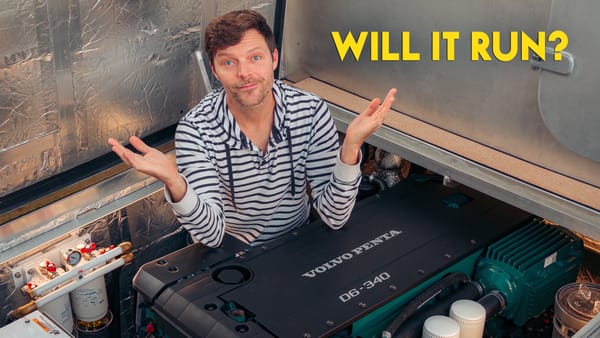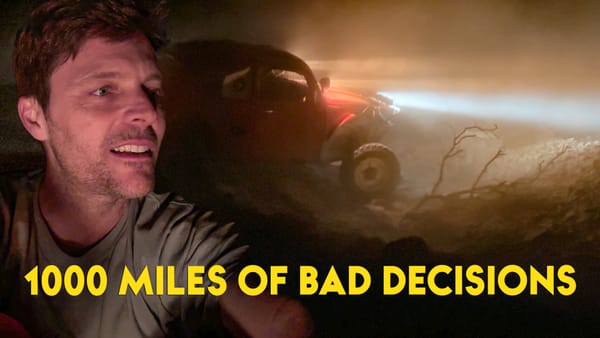Gas RV Stabilizers – Do they Really Work
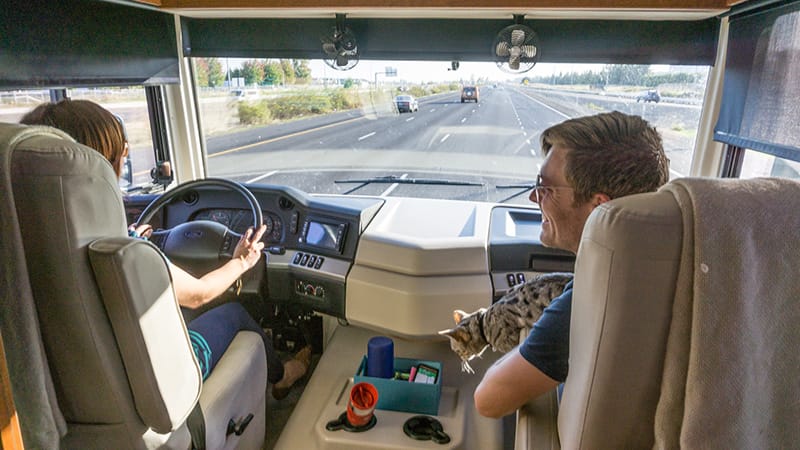
When it came to RV suspension and ride upgrades, lets just say we were skeptical. We’ve been sold “snake oil” many times in our lives and we just assumed all the suspension upgrades out there would be expensive, take loads of time to install and worse of all they’d provide little to no ride improvement. We assumed that Ford built these chassis for Gas RVs and they would have put a lot of R&D into the process…turns out we were completely wrong!
When our Gas RV Experience – Noise, Ride & Performance video went live, many of you fellow Gas RV owners piped up in the comments and said your suspension upgrades made all the difference in the world. On the way south from our Alaska adventures we made an appointment at the Roadmaster factory near Portland, Oregon to get our tow bar and tow car inspected after driving all those bumpy, dusty, rocky Alaskan roads (and five years of full-time wear and tear). While our tow bar was getting an overhaul we casually asked “Do the RV suspension solutions really work?” and here’s their response:
“We sell ten times as many tow bars as we do suspension products, but suspension products garner twenty times the love letters. Our sway bars, trac-bars and steering stabilizers make that much of a “wow” difference. If a tow bar tows your car, you’re satisfied. But when you no longer have to white knuckle fight your RV in a strong wind, or watch your dishes swapping cupboards when driving into a gas station, you are truly amazed.”
We had so many questions on these RV stabilizing products we thought we may as well make a video and do our best to share our experiences along with the answers we found.
what we installed on our 2016 Ford F-53 V-10 Gas Motorhome Chassis
- Front Sway Bar 1139-140 – The install on our coach was extremely simple and took only 30 minutes, I watched the entire thing and it’s something anyone can do themselves (and that’s saying a lot if you’ve seen my How Not To Videos).
- Rear Sway Bar 1139-145 – The install was a bit more difficult because the rear of the RV needed to be raised up and the mounting bracket locations were a little snug for larger fingers. Even still our tech completed this in about an hour. If you’re decent with a screw gun you can most likely do it yourself.
- Reflex Steering Stabilizer Class A “RSSA” – The install is easy with one large caveat: You MUST have the steering wheel and front wheels pointed perfectly straight. The tech took about 20 minutes to install ours ad it was just tightening down a few bolts, so totally doable.
- RSSA Bracket Kit RBK9 – The bracket kit is ordered separately from the RSSA so make sure you order the correct one for your motorhome. The RBK9 fits our 2016 Ford F-53 Class A Motorhome Chassis (and most F-53 Chassis since 2000).
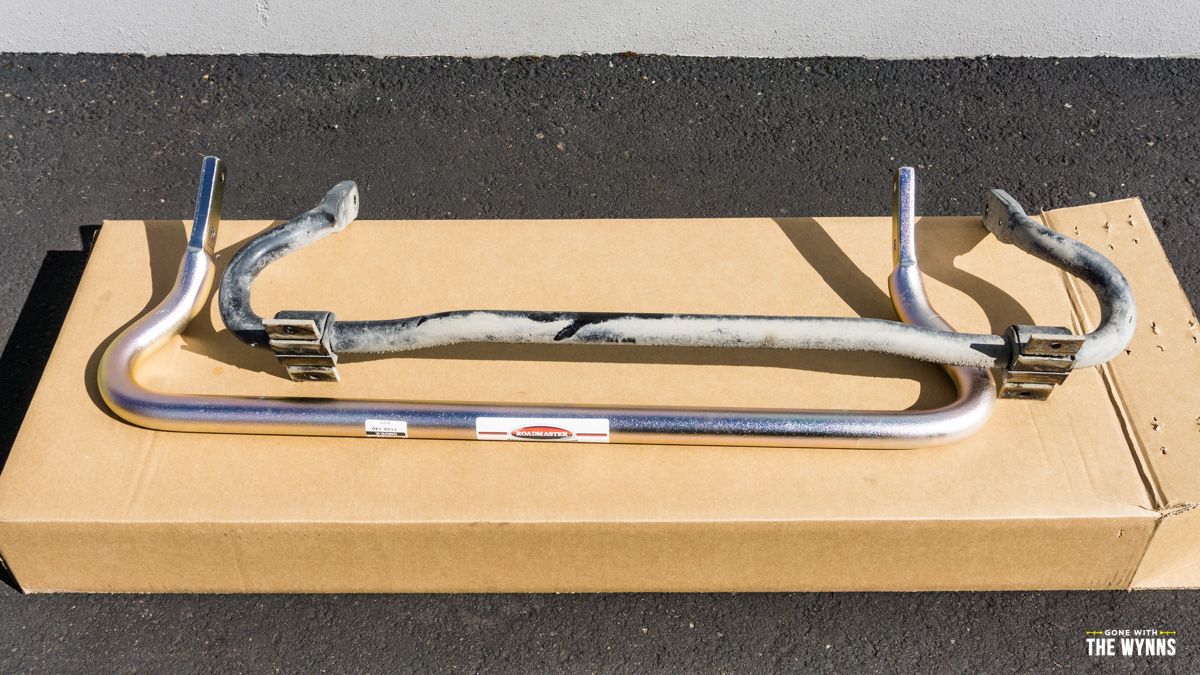
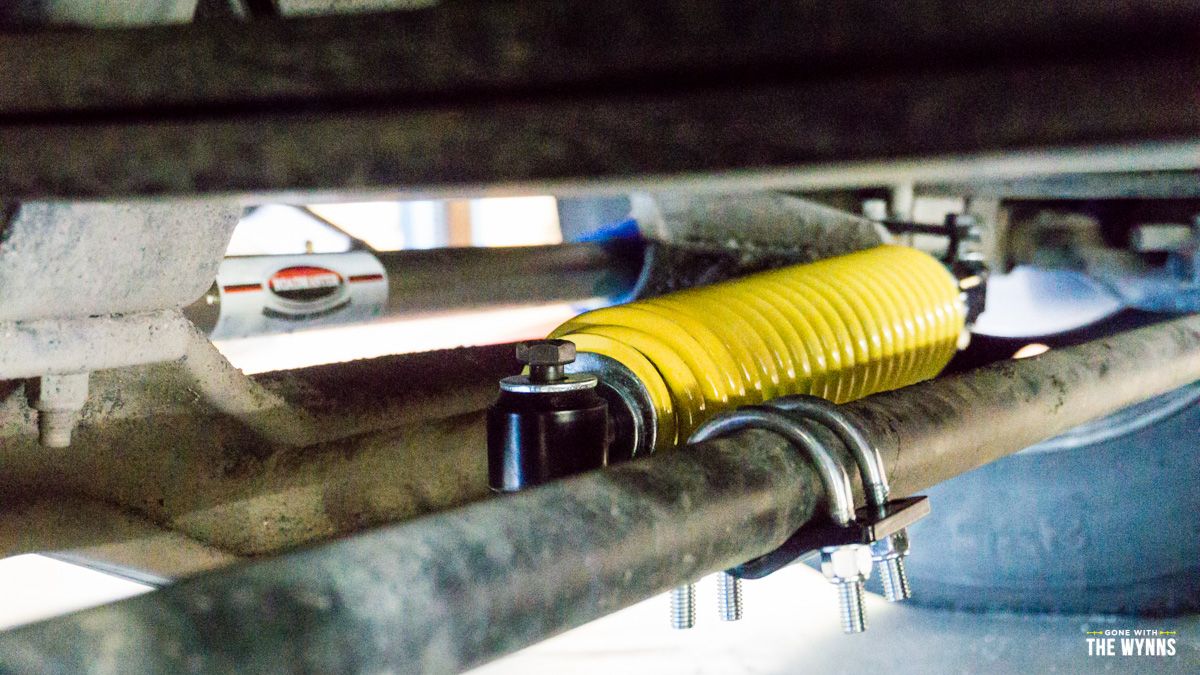
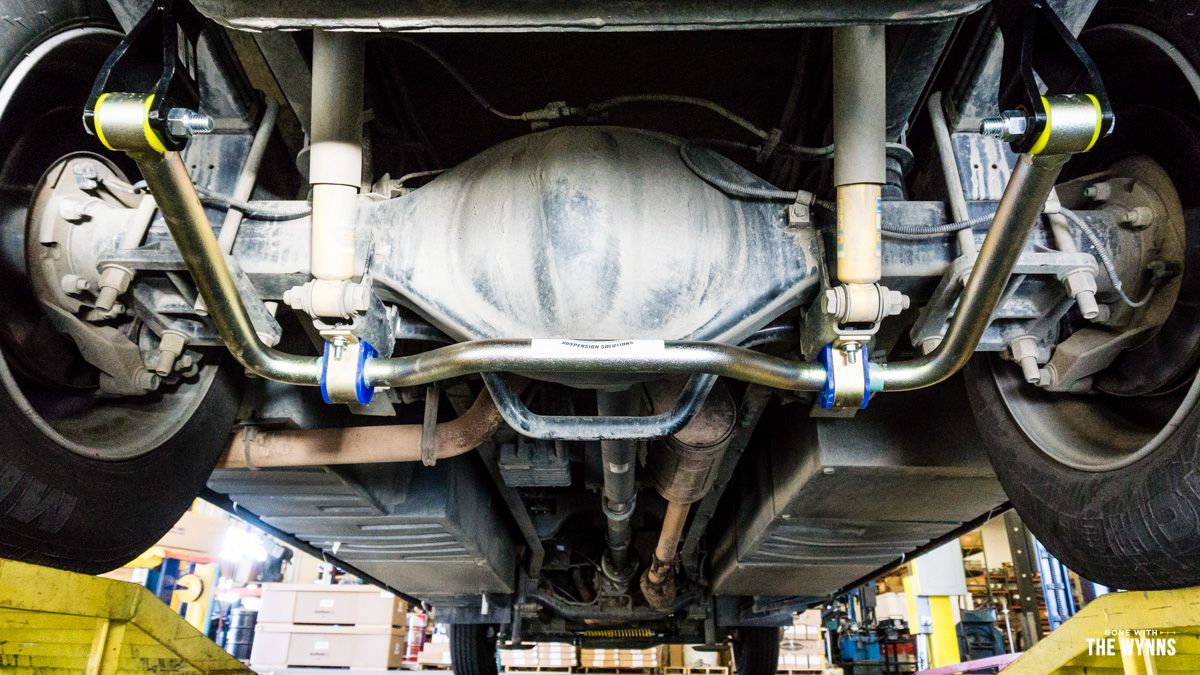
What do these RV Suspension upgrades do?
Here’s my understanding based on the manufacturer’s notes and from our driving experience:
- Sway Bars – Less body roll! Helps keep the RV centered when trucks are passing, in high winds, over bumps, uneven lanes, turning body roll, etc. Generally speaking the Anti-Sway Bars make the RV drive more solid like a car instead of bouncing all around like a boat. We feel less fatigued at the end of a long day of driving because there’s less worry while driving down the road.
- RSSA – More control in the steering wheel. “Return to Center” is what the mfr claims and it does exactly that. When I turn the steering wheel it returns to center more quickly. While driving down the road there is no “wonder” as in we aren’t constantly worrying about staying inside our lane (this should be pretty obvious in the video as Nikki is talking with her hands while traveling at 50mph!). Also helps keep the coach driving straight with bumpy roads, pot holes and roads with uneven lanes/shoulders. This was an add-on that I wasn’t sure about, but now after logging a few hundred miles this little suspension upgrade is huge in terms of driving performance!
What does it cost?
Of course it varies depending on the model year and chassis, but our total shop time for all 3 products was 3.5 hours (even though our tech completed it more quickly this is the going rate and should be approximately what to expect at most service centers). The cost of these 4 products from the Roadmaster factory is: $2,102.70 including sales tax. The hourly rate at the factory is $100/hr and so our install cost was $350.
Here is the pricing breakdown from the factory:
- 1139-140 Roadmaster Front Sway Bar $642.01
- Installation fee 1 hour = $100
- 1139-145 Roadmaster Rear Sway Bar $869.04
- Installation fee 1.5 hours = $150
- RSSA Reflex Steering Stabilizer $328.14 + RBK9 RSSA mounting bracket $100.57
- Installation fee for RSSA & RBK9 = $100 total
Tax Rate WA: 8.4%
Add all this up and we’re sitting right at $2,452.70. Yes its fairly pricey but the difference in ride comfort and safety is so great I think it’s 100% worth the investment, not to mention it gives you a more ‘diesel like’ ride but still keeps you way under that diesel coach costs. We arrived on a Sunday, installed on Monday and they let us stay for an extra day to explore Portland, so if you consider the nearby parks are $40/night it’s like we got 3 nights for free, that’s a $120 discount…at least that’s the way I like to look at it.
I do think you can install most of the items yourself and purchase on Amazon to save a few hundred bucks. If you’re heading south then wait till you get to Oregon and order there, you’ll save sales tax and if you’re an Amazon Prime member you can get free shipping too!
What if I’m on a tighter budget?
I asked the installer and the mfr. about installing only one of the sway bars (instead of both) and this is their response “Each part is available separately. If you can only do one or the other, get the rear sway bar. As a rule of thumb the rear sway bar is about 65% of the solution. Many find the rear to be such an improvement that they go no further. If you want to maximize sway control the front makes up the remaining 35% or so. For those on a budget the rear sway bar is the biggest bang for the buck. For those that want their motorhome to handle more like a car, get both.”
I was told by the installer that our F-53 RV chassis is an easy one to install all these items without having to drill or contort your body in crazy ways. If you have the same chassis there’s a good chance you can install everything yourself in less than a day with little more than a screw gun, ratchet set and some wrenches.
Do the RV suspension upgrades really work?
We were total skeptics on all this aftermarket stuff, but seriously it’s made a BIG difference in our ride. Even the little 2 mile test drive route around the Roadmaster factory was leaps and bounds beyond the original Ford motorhome suspension. I was kicking myself for not having one of those little bubble compass with the ‘yaw’ line to show the sway of the coach, seriously it would have blown your mind the amount of sway we got from the factory vs. how our coach handles now with these few anti-sway & suspension upgrades.
Do I need to upgrade the shocks?
Many people recommended we replace the shocks on our RV but this would come at a great expense not only in products but in installation time. Ford uses pretty high quality gas pressurized 1.63 Bilstein shock absorbers, so considering our motorhome is brand new I’m not willing to attempt replacing the shocks. I asked the installer his opinions and he said the shocks aren’t the problem with the ride, the problem is mostly the sway which they’ve fixed with the anti-sway stabilizers.
What about suspension upgrades for a diesel RV or a Class C?
Apparently there are similar products for class C motorhomes, certain diesel motorhomes, Super C’s and most Gas RV models (the tech said if you’re in a Freightliner Chassis RV you probably won’t need any of these stabilizers). Before ordering anything make sure you call Roadmaster, they have a dedicated support staff that knows the products inside and out…and once you get the proper part numbers then you can order from anywhere you’d like.
Have you installed any upgrades on your RV that have drastically changed your ride? Got any tricks of your own that we didn’t touch on? Please share in the comments below, your experiences can help other travelers out there struggling with the same issues who are looking for help…now that’s good karma!
Disclaimer – Fleetwood owns our test RV and it is a temporary lease to us, so there is absolutely no benefit for us to install these items other than for testing purposes. We were not paid or compensated by anyone for this article and these products were installed at no charge to Fleetwood. We have done this solely for the purpose of testing and reporting our experience to our readers, and honestly we felt bad about our initial poor experience video and we wanted to find a way to remedy these Gas Motorhome issues for fellow RVers. We chose Roadmaster because it was convenient and we’ve been happy with our other purchases from them. There may be other brands out there but we do not have experience with them and we cannot comment on their quality, warranty or effectiveness. If you’ve found this info helpful, the links to products are Amazon links and we receive a small commission if you click from our site and order within 24 hours. Thanks for being a part of the adventure.


